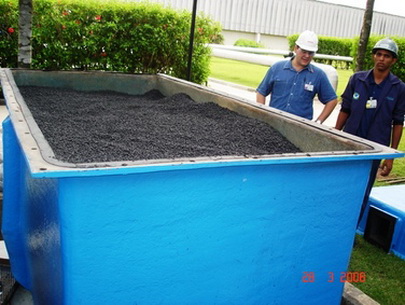Markets
- Pulp and paper mills
- Oil and gas refineries
- Waste water treatment plant
- Grain processing
- Breweries
- Steel mills
- Data center
- Commercial
- Residential
- Pharma and hospitals
- Others
Technology
- HBOS Media Tech
- Filter Management
- Pellets Calculations
- Customized Engineering
- Environment and safety
- Papers and standards
Events
- Seminars and meetings
Pellets Calculations
There are many types of vapor adsorbers currently used in the industry. Changing out the pellets in these systems involve removing many bolts along the top, cleaning out the old pellets, cleaning and/or replacing the screen material at the bottom of the unit, and then putting the new carbon into the unit. It is also critical to be sure the gasket material is still adequate to properly seal the unit after the top is re-positioned and the fasteners are reapplied prior to starting up the unit.
Fiberglass Square or Rectangular Tanks
The amount of carbon needed is usually based on how many CFM the unit is designed to deliver, and fiberglass units take more pellets than stainless steel units of same CFM size. With that in mind, the following table applies to most fiberglass vapor adsorbers in use, regardless of manufacturer.
Fiberglass units Unit CFM 200 500 1000 2000 4000 | Boxes of HBOS-Carb 13 26 50 76 151 |  |
Stainless Steel or Aluminum Round or Oval Tanks
Stainless Steel units are typically not square shaped like the first generation fiberglass vapor adsorbers, so they generally take less carbon than the same size stainless steel unit. They are also available in more sizes. Here are typical pellet needs for stainless steel vapor adsorbers.
Stainless steel units Unit CFM 100 250 500 1000 2000 3000 4000 6000 | Boxes of HBOS-Carb 3 7 16 30 59 87 118 180 |  |